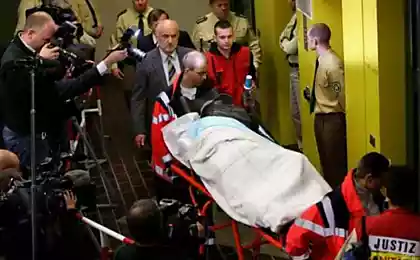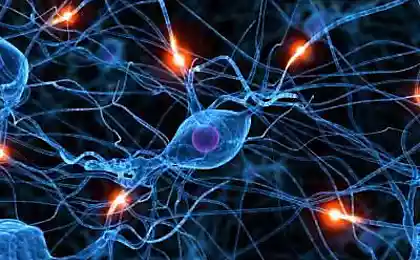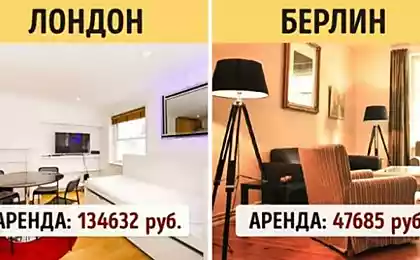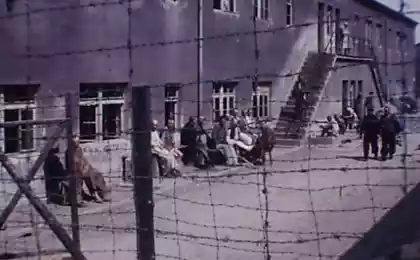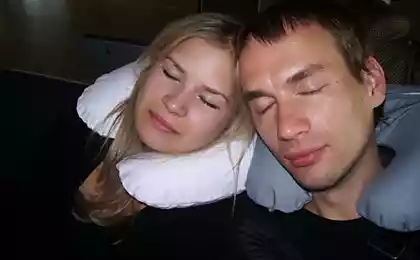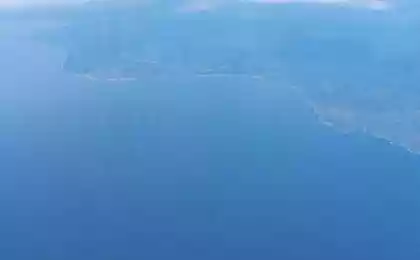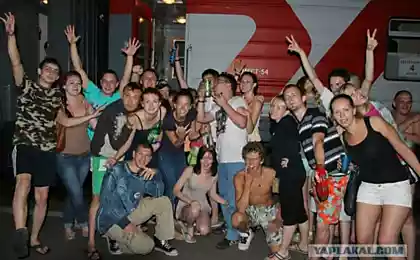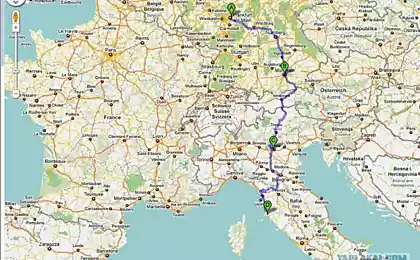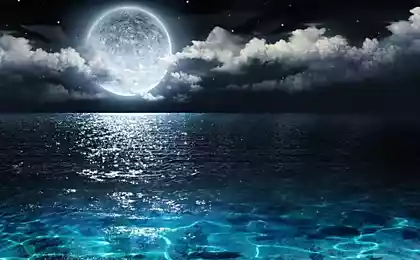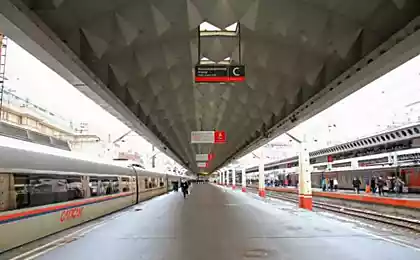708
Spontaneous trip to Buchenwald
"Kotsentratsiolnny camp Buchenwald was established in 37, in close proximity to Weimar, the city of the classics of German (eg Goethe lived here). The concentration camp at Mount Ettersberg SS deported men, teenagers and children who had no place in the National Socialist folk community: political opponents of the nationalist regime, homosexuals, Jehovah's Witnesses, Jews and Gypsies. Since the beginning of the war myrrh National Socialists began to drive people to Buchenwald from almost all European countries. Total from 1937 to 1945 through the camp held more than 250,000 people from more than 50 countries.
In Buchenwald and its units killed about 56000chelovek; they were killed, they died of starvation, from disease or were victims of medical experiments. Some prisoners, such as more than 8,000 Soviet prisoners of war were deliberately killed by the SS.
31 photos via shwed-berlin
1. Barb. Judging by the state is still the original.
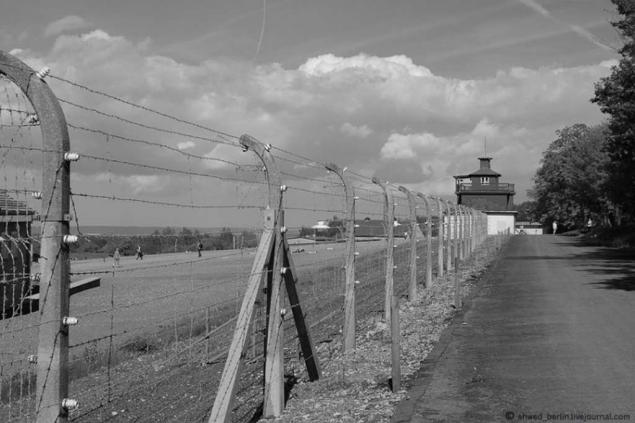
2. Approach to the main gate of the camp.
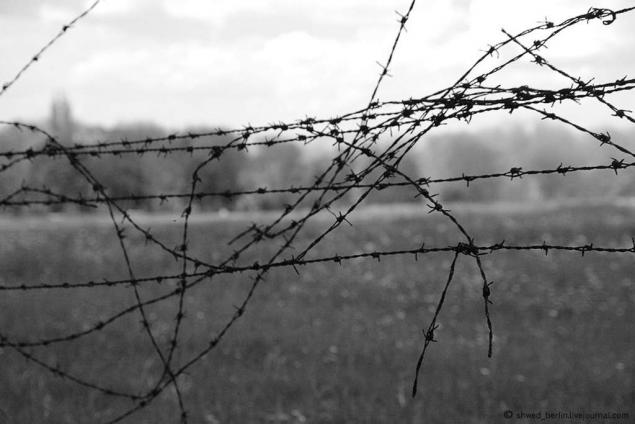
3. At the gates of the famous quote «Jedem das seine» (to each his own).
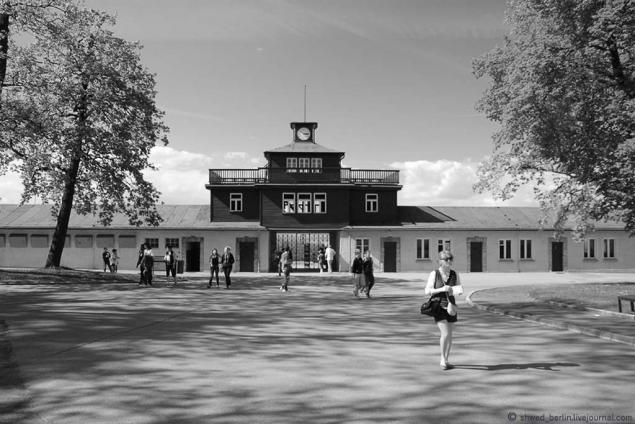
4. Around the camp took place "route guards' length of about three kilometers.
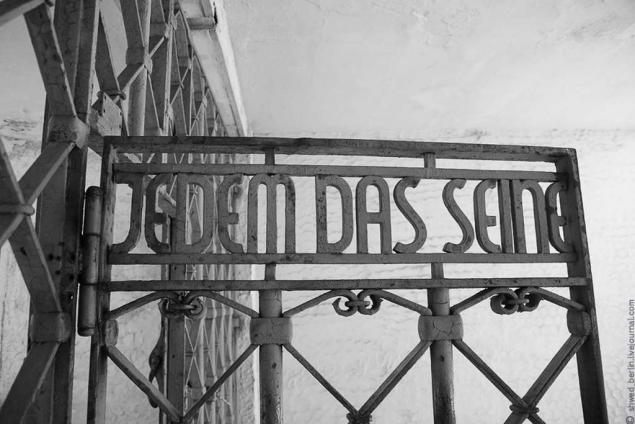
5. "Route SS guards needed to guard the concentration camp»
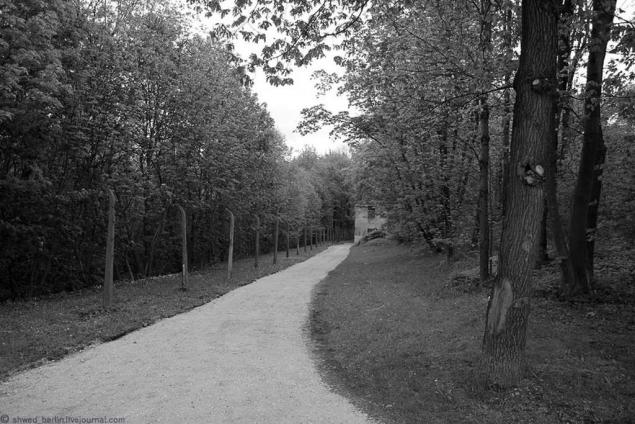
6. Next to this path over the entire route, there are special climbing refuge in case of attack from the air.
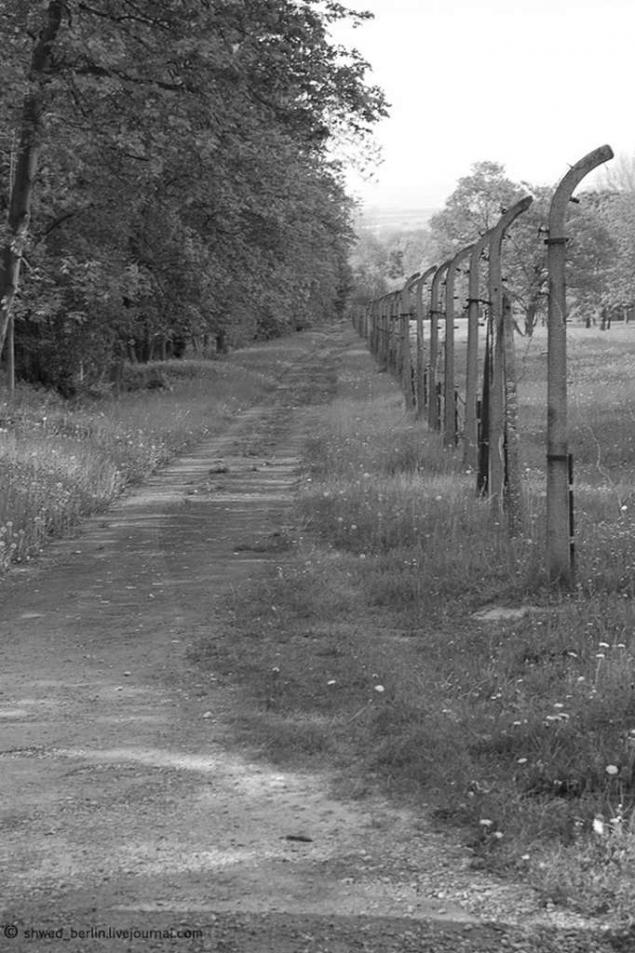
7. Some have two entry and exit, are in the form of a semicircle
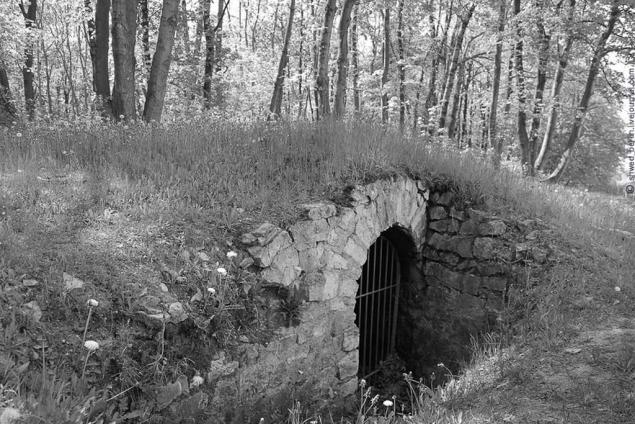
8. The access road to the camp - "Devil's Road". On a photo a gas station and garages on this road.

8. The access road to the camp - "Devil's Road". On a photo a gas station and garages on this road.

10. On this side of the new thorn.
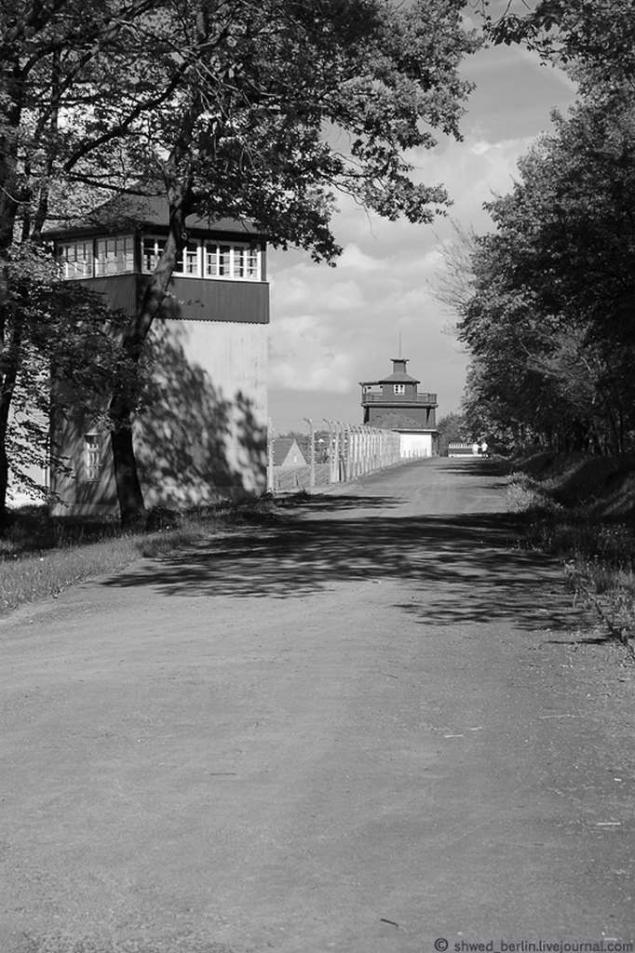
11. Even the ceiling hanging lamp.

12. The entrance of the gate.
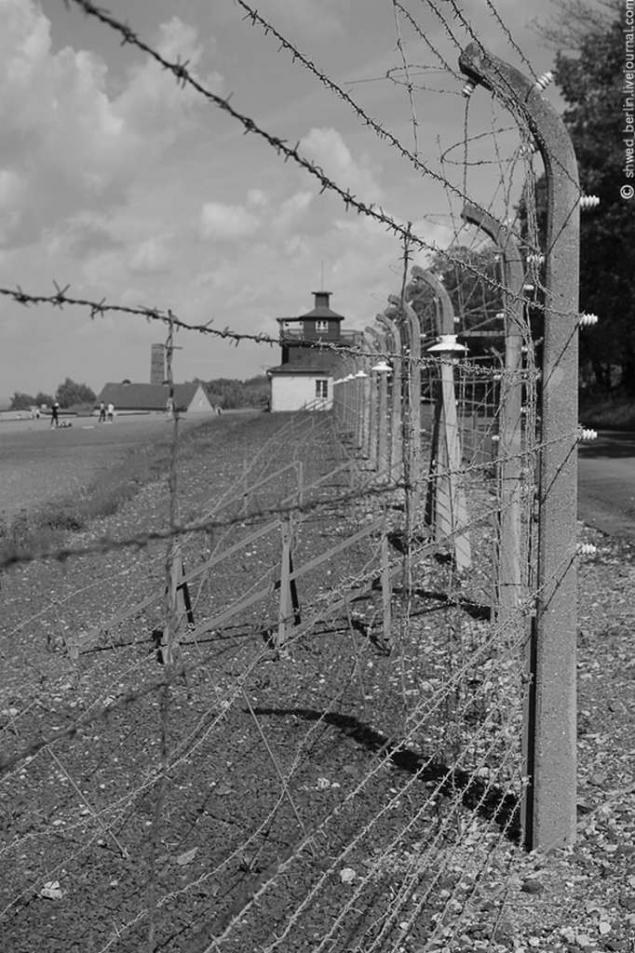
13. Left warehouse building personal items and clothing. Right crematorium.

14. Coming to the crematorium.
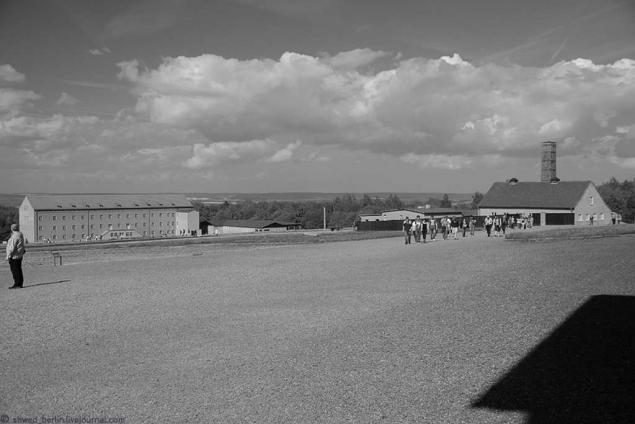
15. "Crematorium - a former pathological department, a place of memory." Cellar - "for the storage of corpses and executions." The bodies were brought in carts and dumped into the basement through a window. In the basement of the perimeter of the room hanging hooks. When the Americans liberated the camp on the territory of the crematorium was ngaydeno a lot of corpses, which do not have time to burn.

16. Inside the crematorium. Pathological department.
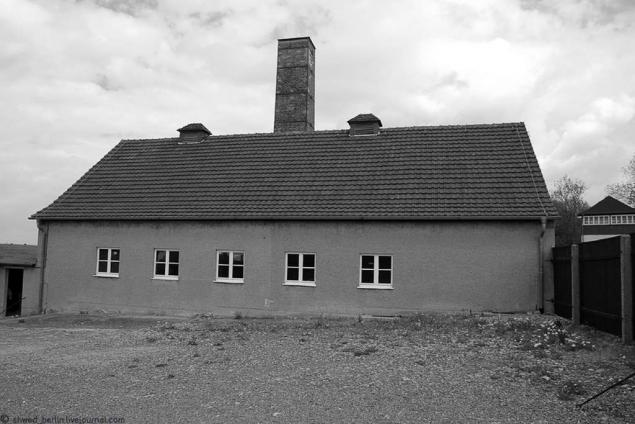
17. The plaque left behind by the victims' relatives.
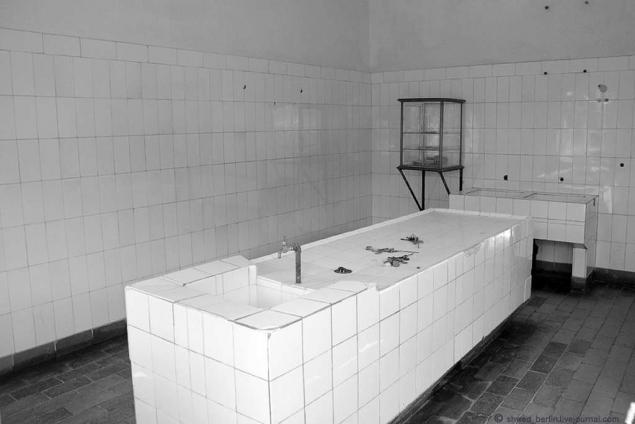
18. Ovens firm «Topf und Söhne».
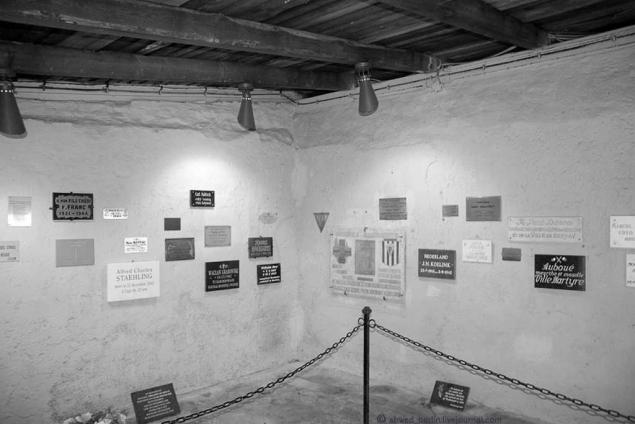
19. Before crematorium installed a cart to transport stones and the pillar, which is tied to the prisoners (a copy).

20. Once again the warehouse items. Next to him, building disinfection.
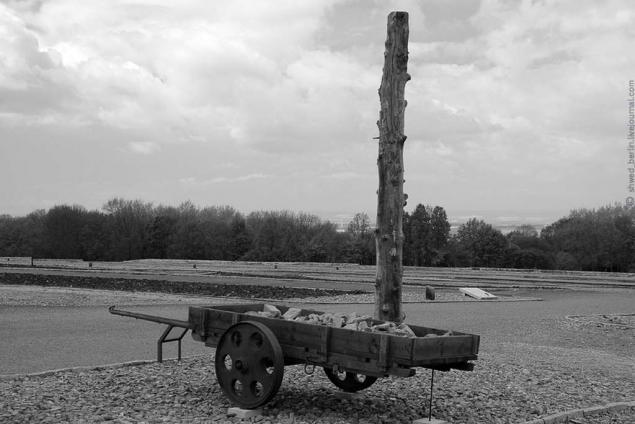
21. A look at the gate. Next to the warehouse is a stump of things "Goethe Oak" (no picture) - oak under which Goethe himself liked to sit. During the camp the oak was still in place.
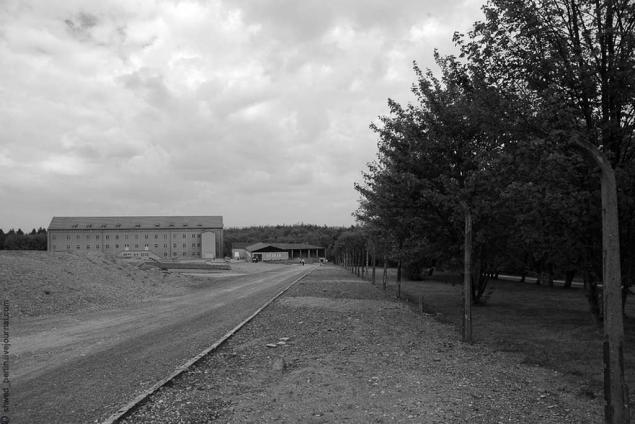
22. Another way of looking at the gate from the territory of the "small camp." "It was built in 1942 as a quarantine; after the mass deportations of 1944-1945. - "Camp goners & quot ;, which were placed thousands of Jewish prisoners & quot ;. Part of the camp with the most appalling conditions.
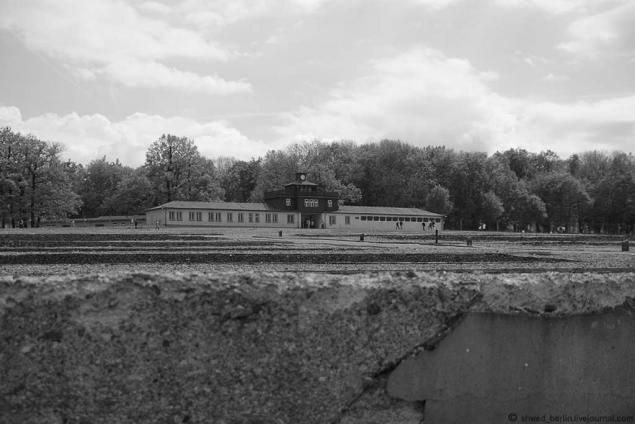
23. Actually themselves barracks on the territory left - only to designated bases. Nearly every barracks is a stone with the number. Some plaques are - Jews, Roma, sexual minorities, etc. In the picture the foundation block 46 - the station carrying out experiments with typhus.
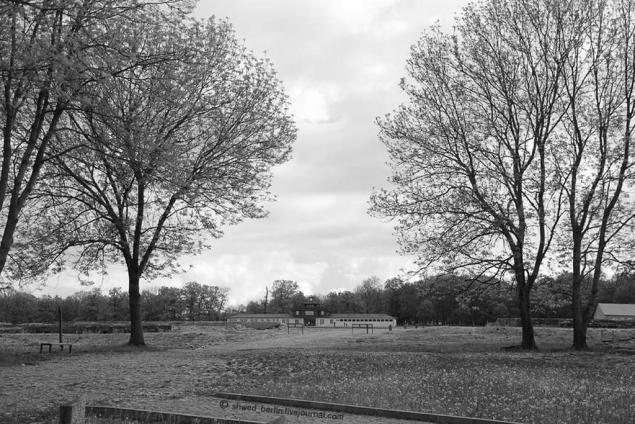
24. Since the camp looked April 45th.
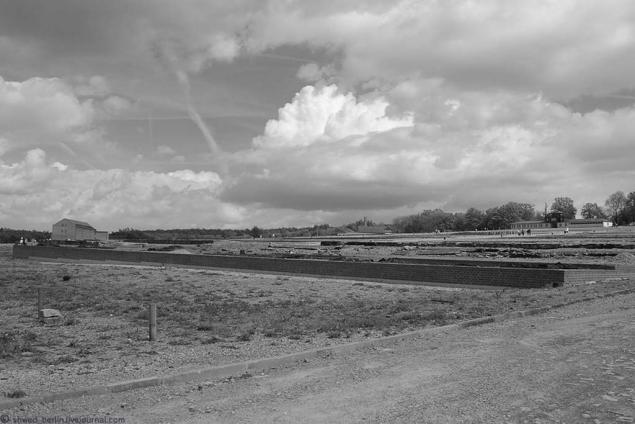
25. The dining room for prisoners.
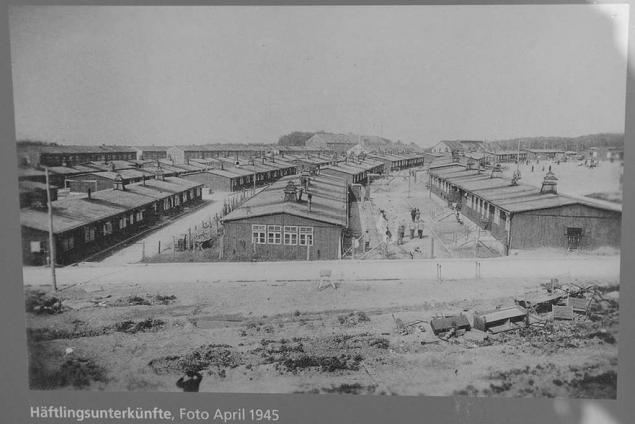
26. Go back to the gate. In the right part of the building were convict chamber cooler.
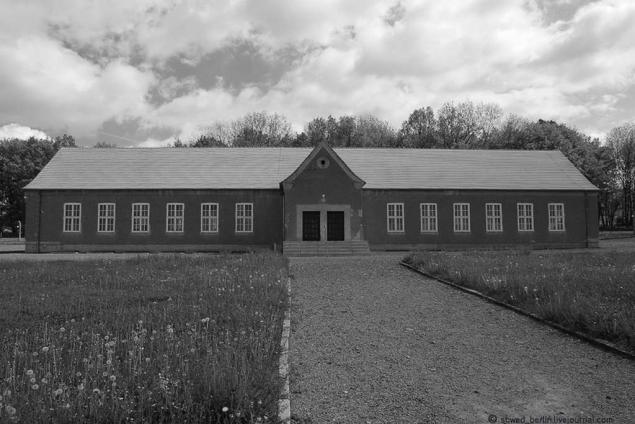
27. Exit from the camp. This SS barracks.

28. Go to the side of the quarry.
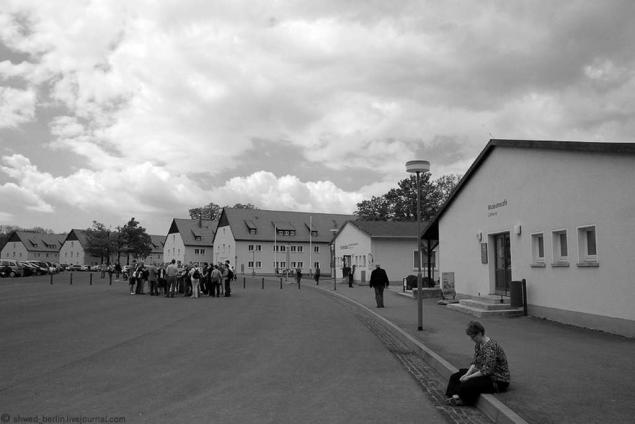
29. "limestone quarry supplied the material for the construction of buildings and roads and was a prerequisite for setting up camp on Mount Ettersberg; Meso executions and severe physical exploitation, as well as the abuse of prisoners SS. »
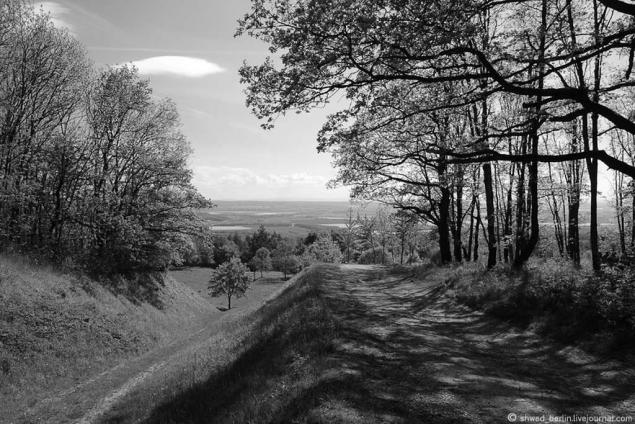
30. Such a cool view from this hill. And do not think that when something was dying a thousand people.
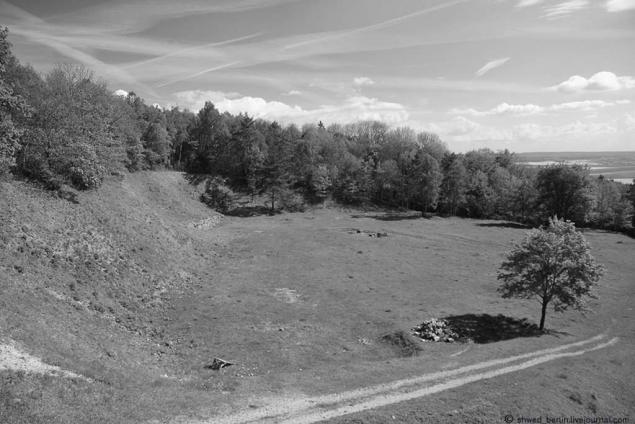
31. Once the card. Yellow - the camp station. Red - the territory of the camp. Green - the former barracks. Purple - memorial. Blue - the quarry. Blue - stable. "On the territory of the stables was a facility for the execution of Soviet prisoners of war" are shaded - the territory of the special camp inmates zahoronneniya №2 1945-1950gg. (!). "Soviet special camp №2. From the Soviet special camps, which are mainly used in building the Buchenwald concentration camp, today there is very little evidence; in the GDR did not remember about the camp. »
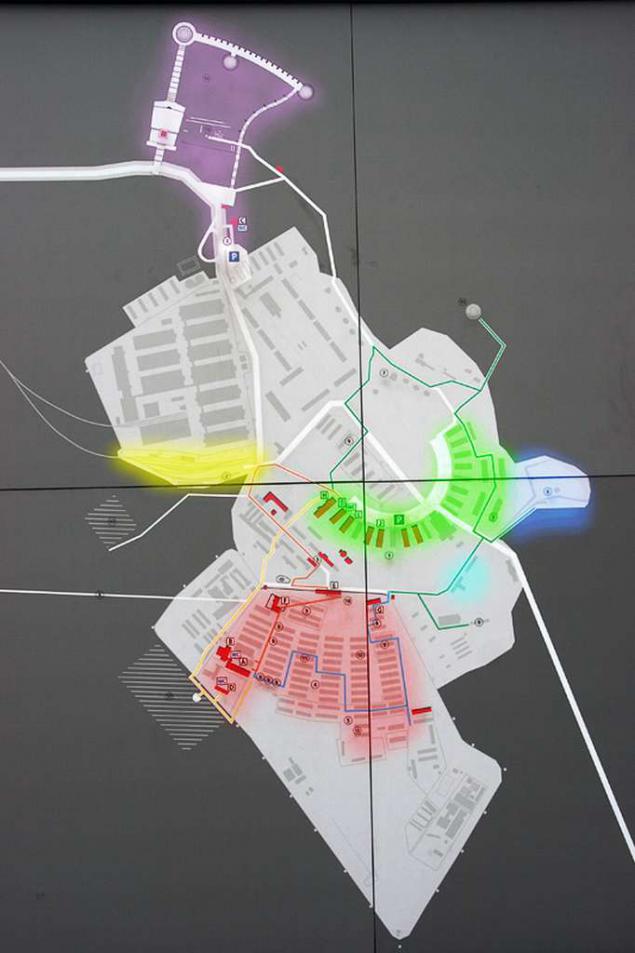
Source:
In Buchenwald and its units killed about 56000chelovek; they were killed, they died of starvation, from disease or were victims of medical experiments. Some prisoners, such as more than 8,000 Soviet prisoners of war were deliberately killed by the SS.
31 photos via shwed-berlin
1. Barb. Judging by the state is still the original.

2. Approach to the main gate of the camp.

3. At the gates of the famous quote «Jedem das seine» (to each his own).

4. Around the camp took place "route guards' length of about three kilometers.

5. "Route SS guards needed to guard the concentration camp»

6. Next to this path over the entire route, there are special climbing refuge in case of attack from the air.

7. Some have two entry and exit, are in the form of a semicircle

8. The access road to the camp - "Devil's Road". On a photo a gas station and garages on this road.

8. The access road to the camp - "Devil's Road". On a photo a gas station and garages on this road.

10. On this side of the new thorn.

11. Even the ceiling hanging lamp.

12. The entrance of the gate.

13. Left warehouse building personal items and clothing. Right crematorium.

14. Coming to the crematorium.

15. "Crematorium - a former pathological department, a place of memory." Cellar - "for the storage of corpses and executions." The bodies were brought in carts and dumped into the basement through a window. In the basement of the perimeter of the room hanging hooks. When the Americans liberated the camp on the territory of the crematorium was ngaydeno a lot of corpses, which do not have time to burn.

16. Inside the crematorium. Pathological department.

17. The plaque left behind by the victims' relatives.

18. Ovens firm «Topf und Söhne».

19. Before crematorium installed a cart to transport stones and the pillar, which is tied to the prisoners (a copy).

20. Once again the warehouse items. Next to him, building disinfection.

21. A look at the gate. Next to the warehouse is a stump of things "Goethe Oak" (no picture) - oak under which Goethe himself liked to sit. During the camp the oak was still in place.

22. Another way of looking at the gate from the territory of the "small camp." "It was built in 1942 as a quarantine; after the mass deportations of 1944-1945. - "Camp goners & quot ;, which were placed thousands of Jewish prisoners & quot ;. Part of the camp with the most appalling conditions.

23. Actually themselves barracks on the territory left - only to designated bases. Nearly every barracks is a stone with the number. Some plaques are - Jews, Roma, sexual minorities, etc. In the picture the foundation block 46 - the station carrying out experiments with typhus.

24. Since the camp looked April 45th.

25. The dining room for prisoners.

26. Go back to the gate. In the right part of the building were convict chamber cooler.

27. Exit from the camp. This SS barracks.

28. Go to the side of the quarry.

29. "limestone quarry supplied the material for the construction of buildings and roads and was a prerequisite for setting up camp on Mount Ettersberg; Meso executions and severe physical exploitation, as well as the abuse of prisoners SS. »

30. Such a cool view from this hill. And do not think that when something was dying a thousand people.

31. Once the card. Yellow - the camp station. Red - the territory of the camp. Green - the former barracks. Purple - memorial. Blue - the quarry. Blue - stable. "On the territory of the stables was a facility for the execution of Soviet prisoners of war" are shaded - the territory of the special camp inmates zahoronneniya №2 1945-1950gg. (!). "Soviet special camp №2. From the Soviet special camps, which are mainly used in building the Buchenwald concentration camp, today there is very little evidence; in the GDR did not remember about the camp. »

Source:

